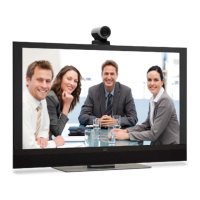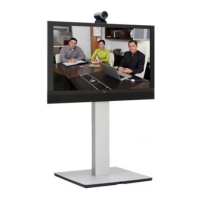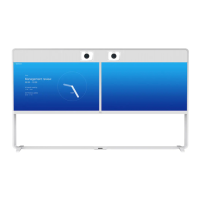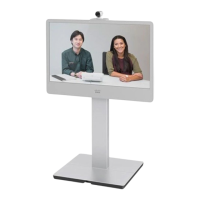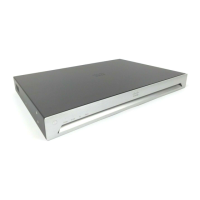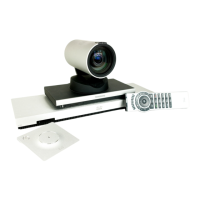D15119.02 MX700 and MX800 Administrator Guide TC7.2, AUGUST 2014. www.cisco.com — Copyright © 2014 Cisco Systems, Inc. All rights reserved.
129
Cisco TelePresence MX700 and MX800 Administrator Guide
MX700 and MX800 has several input connectors. The
following inputs are available for additional content sources:
• Two HDMI inputs (video systems with a single camera) /
One HDMI input (video systems with a dual camera)
• One DVI-I input
• One S-video
• One composite video
You can connect a computer to one of the video inputs in
order to share content locally or with conference participants.
Typically, a computer is connected to an HDMI or DVI-I
input. To get audio when using DVI-I, the computer must
also be connected to one of the codec’s Audio line inputs
(Euroblock)
*
.
Note that the S-video and composite video inputs (BNC
connectors) are disabled when using DVI-I.
You must remove the video system’s left side cover
to get access to the codec connectors. The cover is
fastened with magnets.
For a full description of the settings, refer to the
► System settings chapter.
*
Cisco offers a presentation cable that connects the
codec's DVI-I input and Audio line in port (Euroblock),
to the computer's VGA and mini jack connectors.
Connecting a computer
Codec connector panel
Computer
Audio Line
inputs
(Euroblock,
3.5 mm)
Connector 4 (DVI-I)
This connector is used for
the integrated camera in a
single camera system.
Do not disconnect!
These connectors are used
for the integrated cameras
in a dual camera system.
Do not disconnect!
Connector 3 (HDMI)
Connector 2 (HDMI)
Connector 1 (HDMI)
Video and content quality
Use the Video > Input > Connector n > Quality setting to
optimize quality with respect to motion or sharpness.
Sharpness provides the best quality for detailed images and
graphics, while Motion is best when there is a lot of motion
in the picture. Typically, Sharpness is the best choice for
computer content, while Motion is the best choice for video.
The default value is Motion for Connector 2; and Sharpness
for Connector 3 and Connector 4.
Source type and source name
The default source type is Camera for Connector 2, and PC
for Connector 3 and Connector 4.
Use the Video > Input > Connector n > InputSourceType and
Video > Input > Connector n > Name settings if you want to
modify the naming.

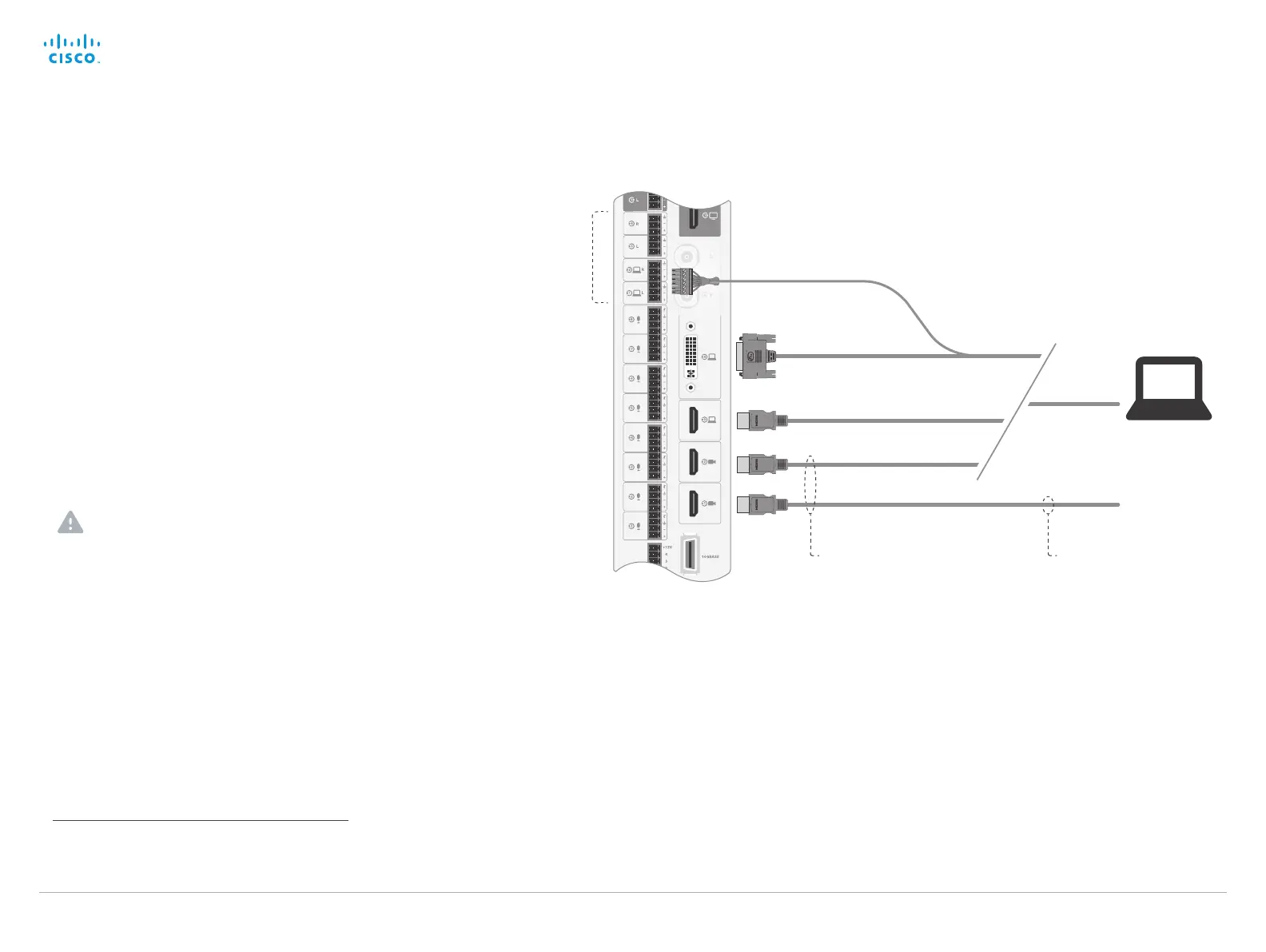